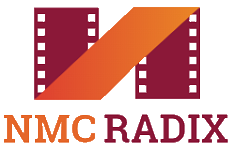Introduction
In the dynamic realm of aviation, where precision and efficiency are paramount, the advent of aircraft managing software development has ushered in a new era of streamlined operations. This comprehensive guide delves into the various facets of aircraft managing software development, offering insights into its significance, functionalities, and benefits.
Table of Contents
- Introduction
- Aircraft Managing Software Development: Revolutionizing Aviation
- The Power of Automation
- Streamlining Maintenance Procedures
- Enhancing Safety Measures
- Efficient Crew Management
- Fuel Efficiency and Cost Savings
- Real-time Data Analytics
- Seamless Passenger Experience
- Regulatory Compliance Made Easy
- Effective Resource Allocation
- Sustainability and Environmental Responsibility
- Conclusion
- FAQs
- Q: How does Aircraft Managing Software Development improve crew management?
- Q: Can this software enhance fuel efficiency?
- Q: What role does real-time data analytics play?
- Q: How does software development contribute to safety?
- Q: Is regulatory compliance simplified through software development?
- Q: How does this software benefit passengers?
Aircraft Managing Software Development: Revolutionizing Aviation
Aircraft managing software development, also known as aviation management software development, entails the creation of sophisticated digital tools tailored to address the intricate demands of aviation operations. These software solutions encompass various functionalities that empower airlines, aviation companies, and operators to optimize their processes, enhance safety measures, and improve overall efficiency.
The Power of Automation
Incorporating automation within the ERP software for aviation industry has been a game-changer. From flight scheduling to crew management, these systems automate routine tasks, minimizing the risk of human error and freeing up valuable human resources for more strategic roles.
Streamlining Maintenance Procedures
One of the pivotal roles of aircraft managing software development is the optimization of aircraft maintenance procedures. These software solutions enable real-time monitoring of aircraft systems, predictive maintenance analysis, and inventory management of spare parts, ensuring that aircraft are in optimal condition while reducing unscheduled downtime.
Enhancing Safety Measures
Safety is the cornerstone of aviation, and software development plays a significant role in elevating safety measures. By integrating advanced risk assessment algorithms, these systems identify potential safety hazards and suggest preventive actions, contributing to safer flights and operations.
Efficient Crew Management
Airlines grapple with complex crew scheduling and management. Aircraft managing software development offers solutions that consider flight hours, rest periods, and regulatory requirements, resulting in well-organized crew schedules and improved workforce satisfaction.
Fuel Efficiency and Cost Savings
Aircraft fuel constitutes a substantial portion of an airline’s expenses. With the help of software development, airlines can optimize flight routes, reduce unnecessary fuel consumption, and ultimately achieve considerable cost savings while minimizing their environmental footprint.
Real-time Data Analytics
The aviation industry thrives on data-driven decision-making. Aircraft managing software development integrates real-time data analytics, offering insights into flight performance, passenger preferences, and operational efficiencies, allowing companies to make informed choices.
Seamless Passenger Experience
Passenger satisfaction is pivotal for airlines. These software solutions contribute to an enhanced passenger experience by facilitating smooth check-ins, personalized services, and real-time flight status updates, fostering customer loyalty.
Regulatory Compliance Made Easy
Navigating the labyrinth of aviation regulations is no small feat. Software development simplifies regulatory compliance by automating documentation, ensuring that operations adhere to industry standards and legal requirements.
Effective Resource Allocation

Aircraft managing software development optimizes allocating crucial resources such as aircraft, crew, and ground facilities. By considering factors like demand fluctuations and maintenance schedules, airlines can operate efficiently and adapt to changing circumstances.
Sustainability and Environmental Responsibility
In an era of heightened environmental awareness, aviation is striving to reduce its carbon footprint. software development aids this endeavor by enabling airlines to optimize routes, minimize emissions, and adopt sustainable practices without compromising operational efficiency.
Conclusion
Aircraft managing software development is a transformative force within the aviation industry. By harnessing the power of automation, data analytics, and optimization, this technology enhances various aspects of aviation operations. From safety and sustainability to cost savings and passenger satisfaction, the benefits are far-reaching. As the aviation landscape continues to evolve, aircraft managing software development remains a cornerstone of progress, propelling the industry into a future of efficiency, safety, and innovation.
FAQs
Q: How does Aircraft Managing Software Development improve crew management?
A: Aircraft managing software development automates crew scheduling, considering factors like flight hours and regulatory guidelines, resulting in efficient and well-organized crew management.
Q: Can this software enhance fuel efficiency?
A: Yes, the software optimizes flight routes, reduces fuel consumption, and leads to significant cost savings while promoting fuel efficiency.
Q: What role does real-time data analytics play?
A: Real-time data analytics provide insights into flight performance, passenger preferences, and operational efficiencies, enabling informed decision-making.
Q: How does software development contribute to safety?
A: By integrating advanced risk assessment algorithms, software development identifies safety hazards and recommends preventive actions, leading to safer operations.
Q: Is regulatory compliance simplified through software development?
A: Absolutely, software development automates documentation and ensures adherence to aviation regulations, streamlining compliance procedures.
Q: How does this software benefit passengers?
A: It enhances the passenger experience through smooth check-ins, personalized services, and real-time flight updates, enhancing customer satisfaction.






